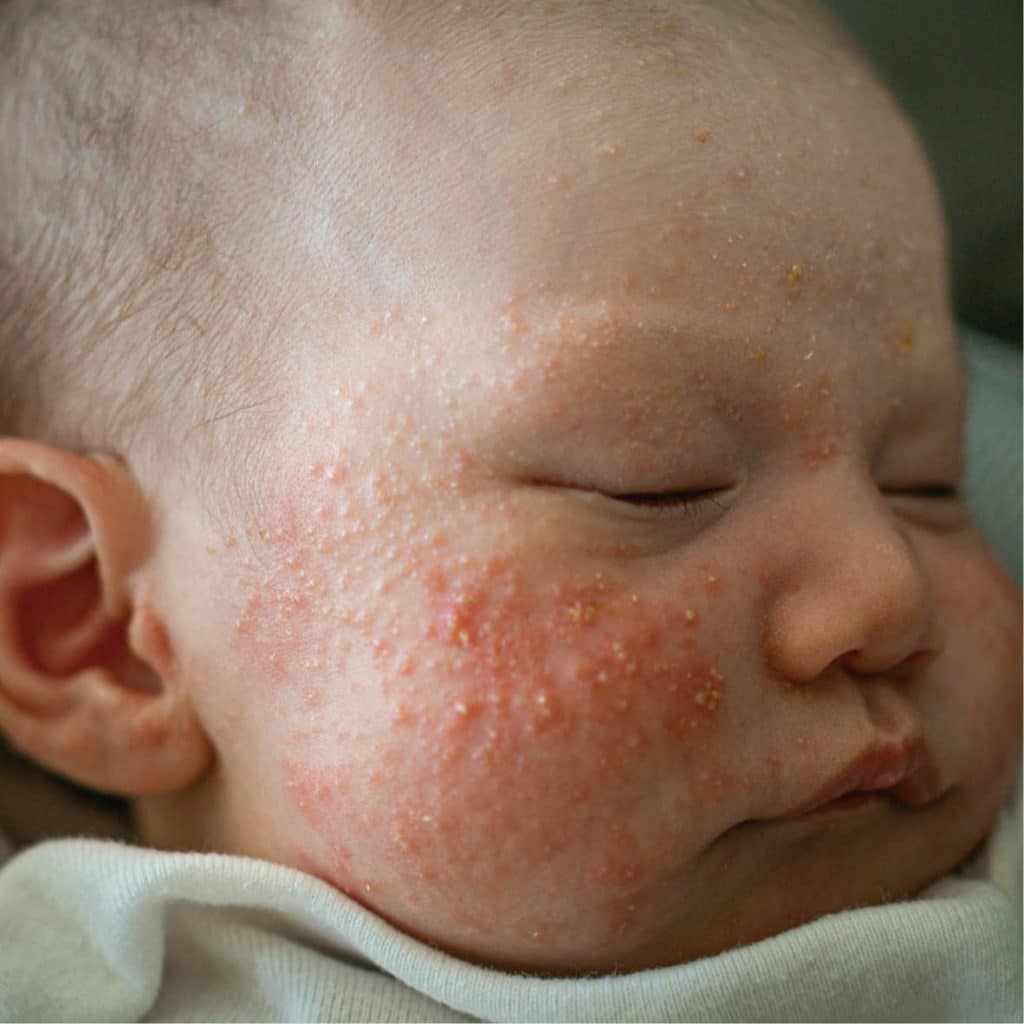Baby acne is really common and usually appears between 2 and 4 weeks after your little one’s arrival.
It’s nothing to worry about and in this week’s blog we’re talking about how to spot it and what to do if you little one does develop it.

What is baby acne?
Baby acne is small, inflamed bumps that develop on a baby’s face, neck, back or chest. It’s very common and not harmful for your baby. It’s caused by hormones your baby is exposed to before birth.
Baby acne looks like little bumps on your baby’s skin usually surrounded by red or darker skin depending on your baby’s skin colour. It’s most likely to appear on their cheeks, nose or forehead.
What can I do about it?
Baby acne isn’t harmful and it’ll usually clear up on it’s own within a few weeks so you don’t need to do anything about it.
You can ensure your baby’s face is kept clean by gently washing it with cooled boiled water and cotton wool.
Please don’t be tempted to use any acne treatments intended for older children or adults on your baby’s skin as this could be harmful to them.
Avoid scrubbing the affected area as this could aggravate the skin and be uncomfortable for your little one.
Don’t use any oils or lotions on your baby’s skin.
What if it’s not acne?
Milia are small white spots that can appear on a baby’s face when they’re a few days old. They may appear white or yellow depending on your baby’s skin tone.
They are not harmful and will usually clear up on their own within a few weeks without treatment.
When to see a GP
If you are concerned that it might not be baby acne or that your child has a rash and is unwell please always see a GP or ring 111 for advice.
If your baby has any of the following symptoms please get them seen by a medical professional as soon as possible:
• Fever, cold hands and feet
• Refusing food and vomiting
• Fretful, dislike being handled
• Drowsy, floppy, unresponsive
• Rapid breathing or grunting
• Pale, blotchy skin or a rash that doesn’t fade
• Unusual cry, moaning
• Tense, bulging fontanelle (soft spot)
• Stiff neck, dislike bright lights
• Convulsions/seizures
These signs and symptoms could indicate meningitis and septicaemia which can be very serious.
Please note that in newborn babies their temperature could be low or normal.
Remember to trust your instincts when it comes to your baby.
SHARE this blog post with a new parent or parent-to-be.
